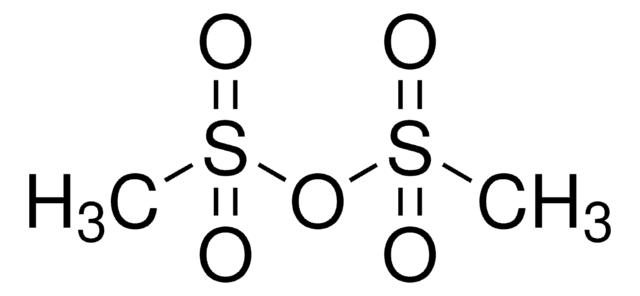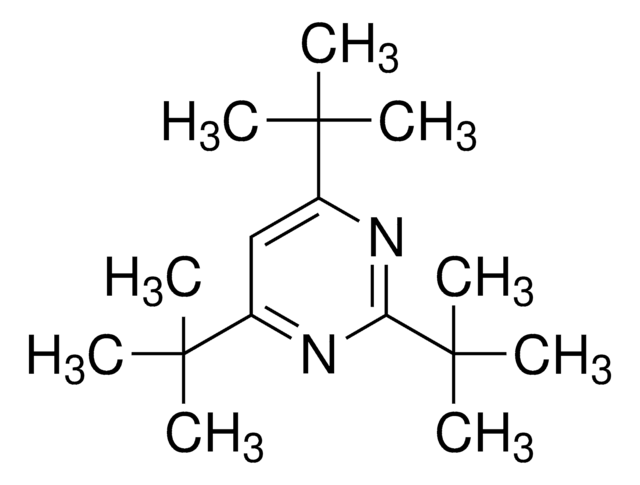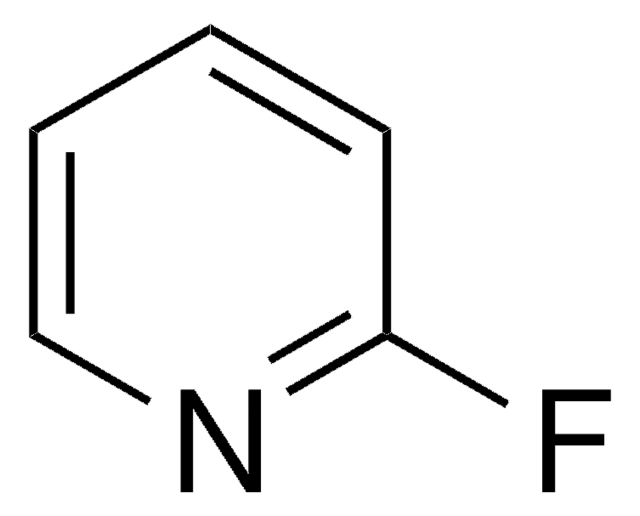If this product has an expiration or retest date, it will be shown on the Certificate of Analysis (COA, CofA). If there is no retest or expiration date listed on the product's COA, we do not have suitable stability data to determine a shelf life. For these products, the only date on the COA will be the release date; a retest, expiration, or use-by-date will not be displayed.
For all products, we recommend handling per defined conditions as printed in our product literature and website product descriptions. We recommend that products should be routinely inspected by customers to ensure they perform as expected.
For products without retest or expiration dates, our standard warranty of 1 year from the date of shipment is applicable.
For more information, please refer to the Product Dating Information document: https://www.sigmaaldrich.com/deepweb/assets/sigmaaldrich/marketing/global/documents/449/386/product-dating-information-mk.pdf
Wichtige Dokumente
176176
Trifluormethansulfonsäureanhydrid
99%
Synonym(e):
Trifluormethansulfonanhydrid
About This Item
Empfohlene Produkte
Dampfdichte
5.2 (vs air)
Qualitätsniveau
Dampfdruck
8 mmHg ( 20 °C)
Assay
99%
Form
liquid
Brechungsindex
n20/D 1.321 (lit.)
bp
81-83 °C (lit.)
Dichte
1.677 g/mL at 25 °C (lit.)
Funktionelle Gruppe
fluoro
triflate
SMILES String
FC(F)(F)S(=O)(=O)OS(=O)(=O)C(F)(F)F
InChI
1S/C2F6O5S2/c3-1(4,5)14(9,10)13-15(11,12)2(6,7)8
InChIKey
WJKHJLXJJJATHN-UHFFFAOYSA-N
Suchen Sie nach ähnlichen Produkten? Aufrufen Leitfaden zum Produktvergleich
Allgemeine Beschreibung
Anwendung
- Reaktant bei der Synthese von Dipentaerythritol-Hexatriflat mittels Triflatationsverfahren und Azido-Diphenyl-Essigsäure.[2]
- Katalysator für die Glykosylierung zur Synthese von Polysacchariden.
- Reagenz für die stereoselektive Synthese von Mannosazid-Methyluronat-Donatoren.
- Aktivator für die direkte Glykosylierung mit anomeren Hydroxyzuckern
- Ein Methylierungsreagenz zur Synthese von trifluormethylierten Verbindungen durch direkte Einführung der CF3-Gruppe zu (Hetero-)Arenen.[3]
- Reagenz für die Herstellung von substituierten Tetrazolen aus sekundären Amiden unter Verwendung von Natriumazid.[4]
- Reagenz in der Bischler−Napieraiski-Zyklisierungsreaktion zusammen mit 4-(N,N-Dimethylamnino)pyridin.[5]
Reagens für die stereoselektive Synthese von Mannosazid-Methyluronat-Donatoren
Aktivator für die direkte Glykolysierung mit anomeren Hydroxyzuckern
Empfehlung
Zubehör
Signalwort
Danger
H-Sätze
Gefahreneinstufungen
Acute Tox. 4 Oral - Eye Dam. 1 - Ox. Liq. 2 - Skin Corr. 1B - STOT SE 3
Zielorgane
Respiratory system
Lagerklassenschlüssel
5.1B - Oxidizing hazardous materials
WGK
WGK 3
Flammpunkt (°F)
not determinedboils before flash
Flammpunkt (°C)
not determinedboils before flash
Persönliche Schutzausrüstung
Faceshields, Gloves, Goggles, type ABEK (EN14387) respirator filter
Hier finden Sie alle aktuellen Versionen:
Analysenzertifikate (COA)
Die passende Version wird nicht angezeigt?
Wenn Sie eine bestimmte Version benötigen, können Sie anhand der Lot- oder Chargennummer nach einem spezifischen Zertifikat suchen.
Besitzen Sie dieses Produkt bereits?
In der Dokumentenbibliothek finden Sie die Dokumentation zu den Produkten, die Sie kürzlich erworben haben.
Kunden haben sich ebenfalls angesehen
-
How can I determine the shelf life / expiration / retest date of this product?
1 answer-
Helpful?
-
-
How is shipping temperature determined? And how is it related to the product storage temperature?
1 answer-
Products may be shipped at a different temperature than the recommended long-term storage temperature. If the product quality is sensitive to short-term exposure to conditions other than the recommended long-term storage, it will be shipped on wet or dry-ice. If the product quality is NOT affected by short-term exposure to conditions other than the recommended long-term storage, it will be shipped at ambient temperature. As shipping routes are configured for minimum transit times, shipping at ambient temperature helps control shipping costs for our customers. For more information, please refer to the Storage and Transport Conditions document: https://www.sigmaaldrich.com/deepweb/assets/sigmaaldrich/marketing/global/documents/316/622/storage-transport-conditions-mk.pdf
Helpful?
-
Active Filters
Unser Team von Wissenschaftlern verfügt über Erfahrung in allen Forschungsbereichen einschließlich Life Science, Materialwissenschaften, chemischer Synthese, Chromatographie, Analytik und vielen mehr..
Setzen Sie sich mit dem technischen Dienst in Verbindung.


















